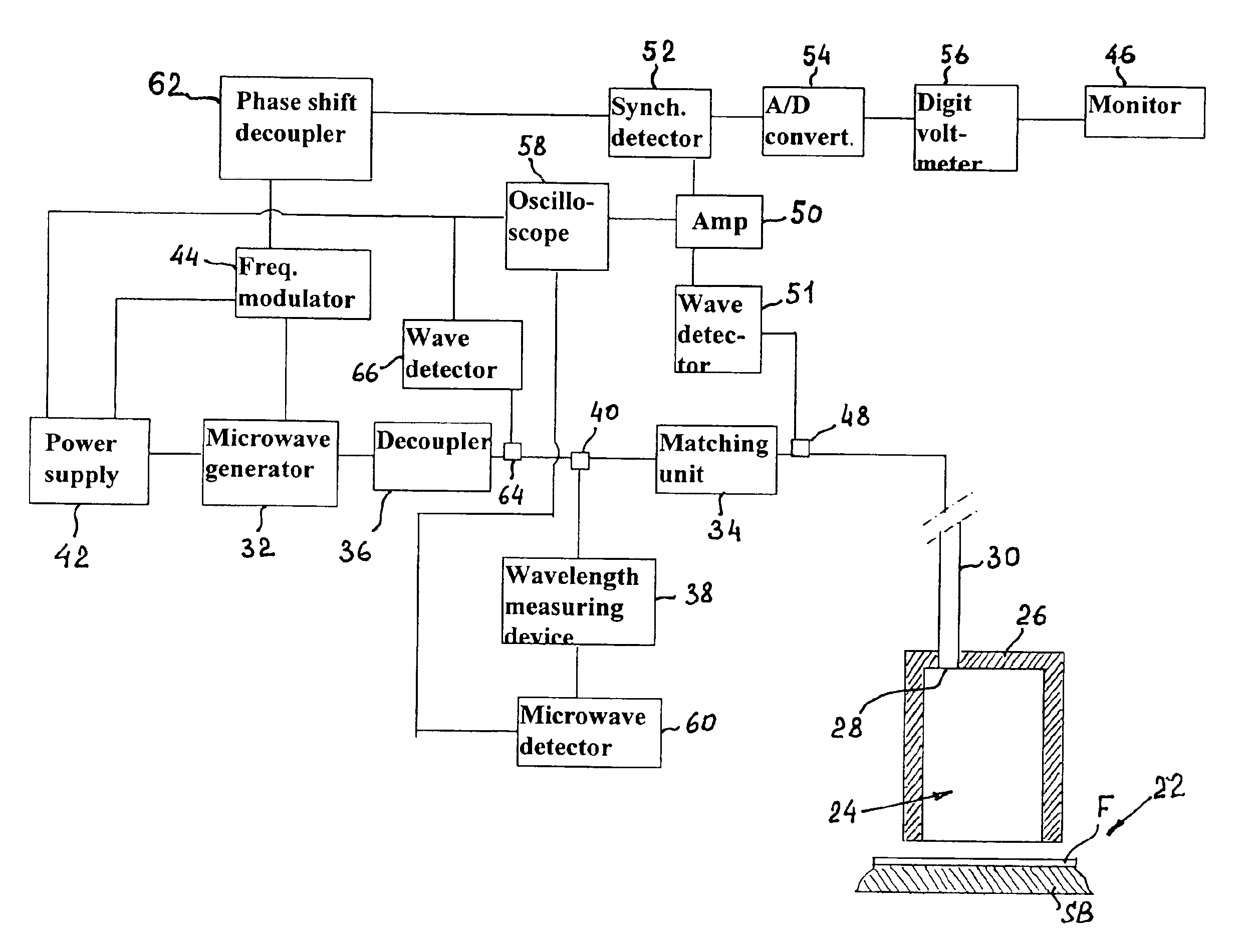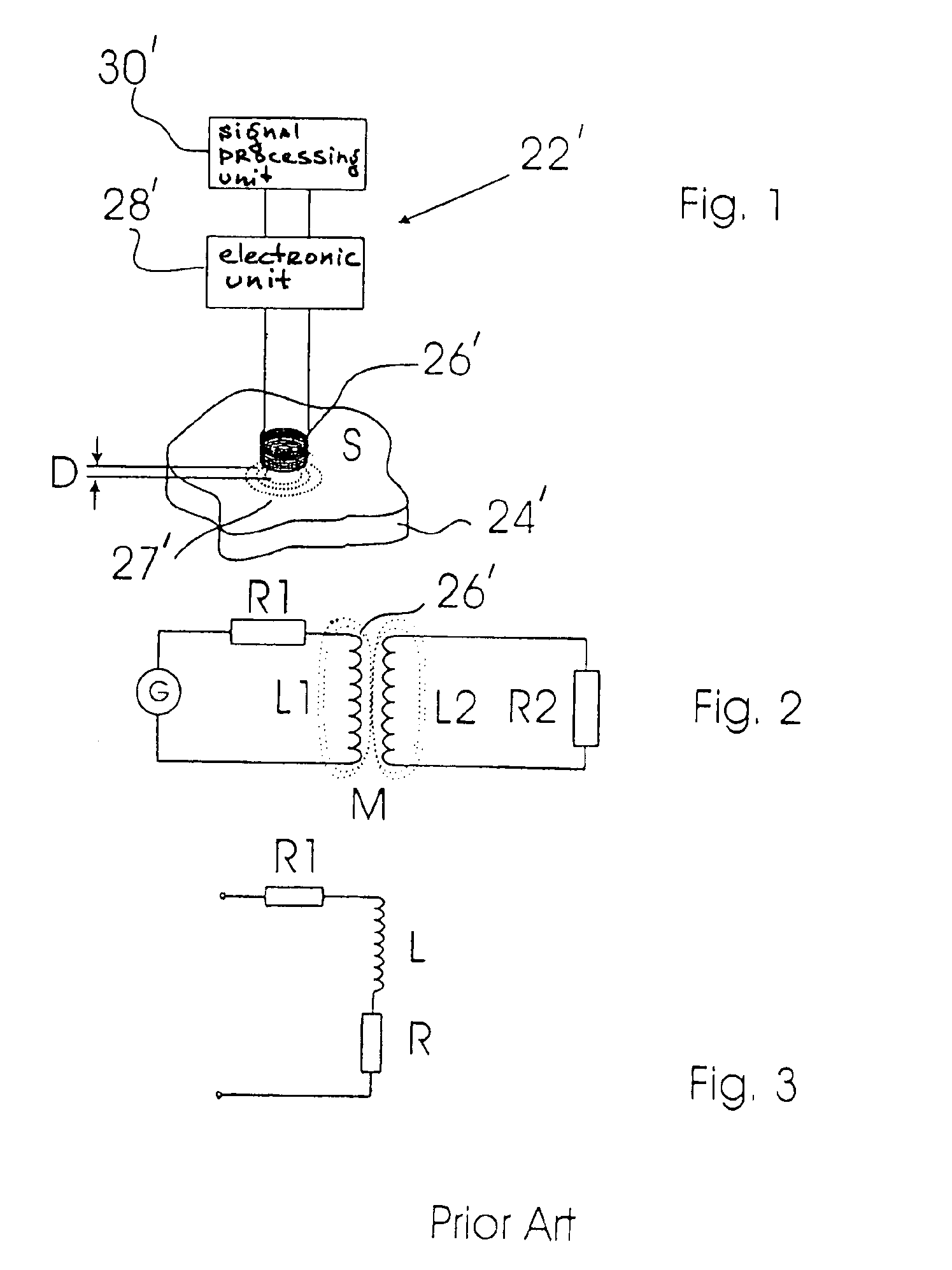Method and apparatus for precision measurement of film thickness
a technology of precision measurement and film thickness, applied in the direction of instruments, resistance/reactance/impedence, corona discharge, etc., can solve the problems of inconvenient use, inconvenient use, and the most expensive instrument of this type compared to metrological equipment of other systems, and achieve high-accuracy, contactless measurement, and simple
- Summary
- Abstract
- Description
- Claims
- Application Information
AI Technical Summary
Benefits of technology
Problems solved by technology
Method used
Image
Examples
Embodiment Construction
[0049]The apparatus, which as a whole is designated by reference numeral 20, will be described in general in order to show main components and their interconnections, and then the main units will be described separately in more detail. It should be understood that the specific components and their arrangement shown in FIG. 4 represent only one possible example of the apparatus, which can be embodied in a variety of other acceptable modifications.
[0050]The main unit or heart of the apparatus is a cylindrical microwave resonator unit 22 which functions as a film-thickness sensor unit for measuring the thickness of a conductive thin film F placed on a non-conductive substrate SB. The resonator unit 22 comprises a cylindrical body, which has one end 24 (which faces the film F) open in a non-working state of the resonator and another end covered by a membrane 26 with an opening 28 for connection of one end of a microwaveguide line30. The opposite end of the microwaveguide line 30 is conn...
PUM
 Login to View More
Login to View More Abstract
Description
Claims
Application Information
 Login to View More
Login to View More - R&D
- Intellectual Property
- Life Sciences
- Materials
- Tech Scout
- Unparalleled Data Quality
- Higher Quality Content
- 60% Fewer Hallucinations
Browse by: Latest US Patents, China's latest patents, Technical Efficacy Thesaurus, Application Domain, Technology Topic, Popular Technical Reports.
© 2025 PatSnap. All rights reserved.Legal|Privacy policy|Modern Slavery Act Transparency Statement|Sitemap|About US| Contact US: help@patsnap.com



